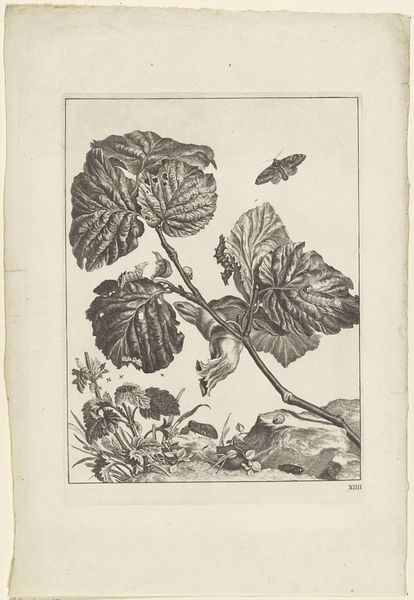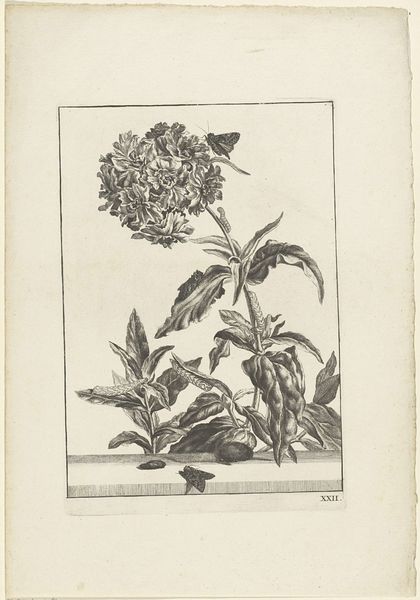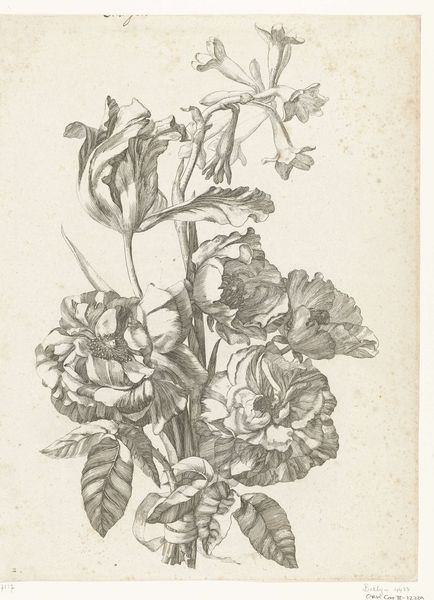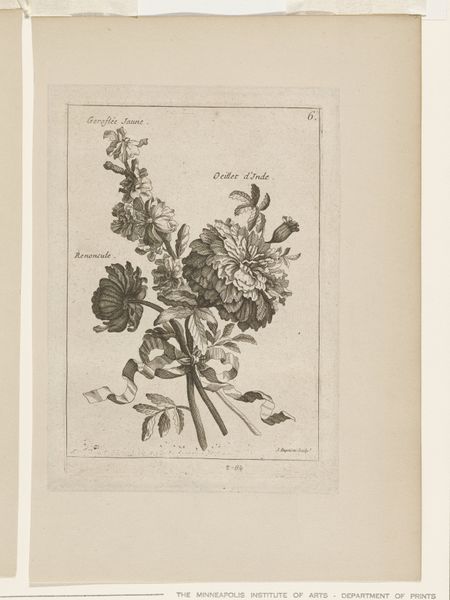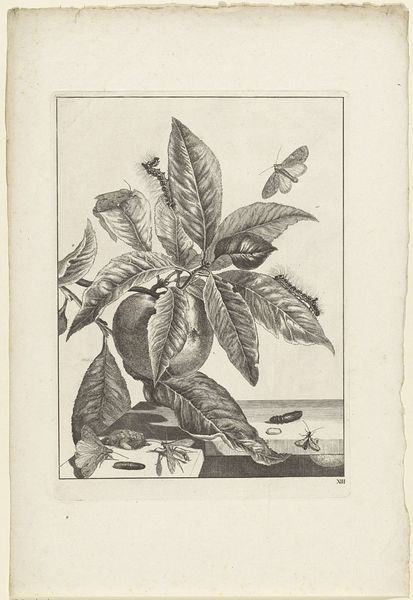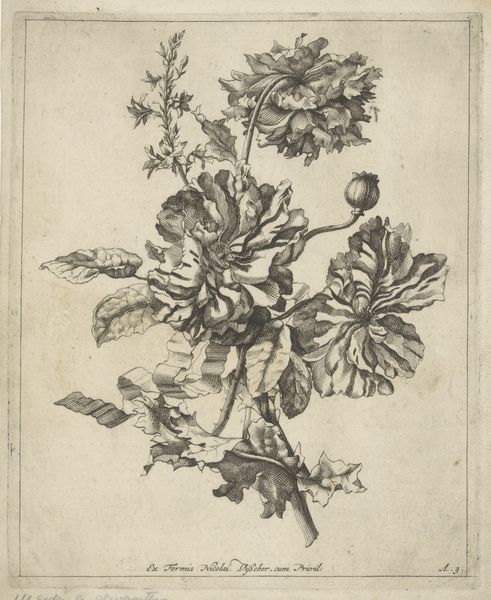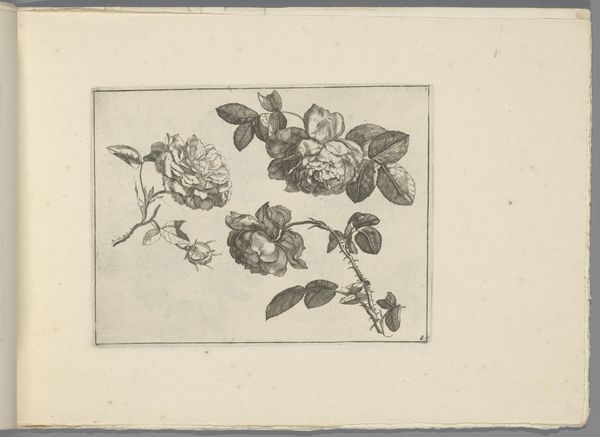
drawing, print, ink, engraving
#
drawing
#
baroque
#
ink paper printed
# print
#
old engraving style
#
ink
#
pen-ink sketch
#
engraving
Dimensions: height 274 mm, width 215 mm
Copyright: Rijks Museum: Open Domain
Curator: Take a look at this print titled "Verschillende rupsen en vlinders op een plant" ("Various caterpillars and butterflies on a plant"). It’s attributed to Jacob l’(II) Admiral and dates from 1710-1774. The technique combines drawing with engraving in ink on paper. Editor: The immediate impression I get is of delicacy, despite being rendered in ink. The detail is incredibly fine; the leaves, for example, appear quite damaged, but the whole composition feels light, almost airy. Curator: I’d say that captures the visual symbolism perfectly. Think about metamorphosis: the cycle of life, death, and rebirth represented by the caterpillars transforming into butterflies. The damage to the leaves speaks to time's inevitable effect on even the most beautiful things, right? Editor: It's fascinating to consider the materiality, too. Engraving involves laboriously cutting lines into a metal plate, then using that to produce prints. Think about the repeated, physical labor to create multiple copies of this seemingly fragile scene. How were these prints circulated, consumed, and valued? Curator: Certainly, and that would have spread not just copies of the image, but the meaning—a visual reminder of nature’s cycles and our own transient existence. It serves a sort of "memento mori," prompting the viewer to meditate on mortality. Editor: I'm drawn to the interplay between the 'high art' skill of the engraver, and the natural world that’s usually left out from that categorization. Bugs aren't typically elevated to the level of fine art subject matter, so there is this implicit bridging between science, close observation of nature, and artistic skill in a craft that also lends itself to mass production of an image. Curator: Well, seeing how you connected material practice to its possible readings gives this beautiful illustration another interesting spin. Editor: Indeed, I learned a new perspective about cyclical themes by combining art practice with symbolism, opening a rich tapestry.
Comments
No comments
Be the first to comment and join the conversation on the ultimate creative platform.
